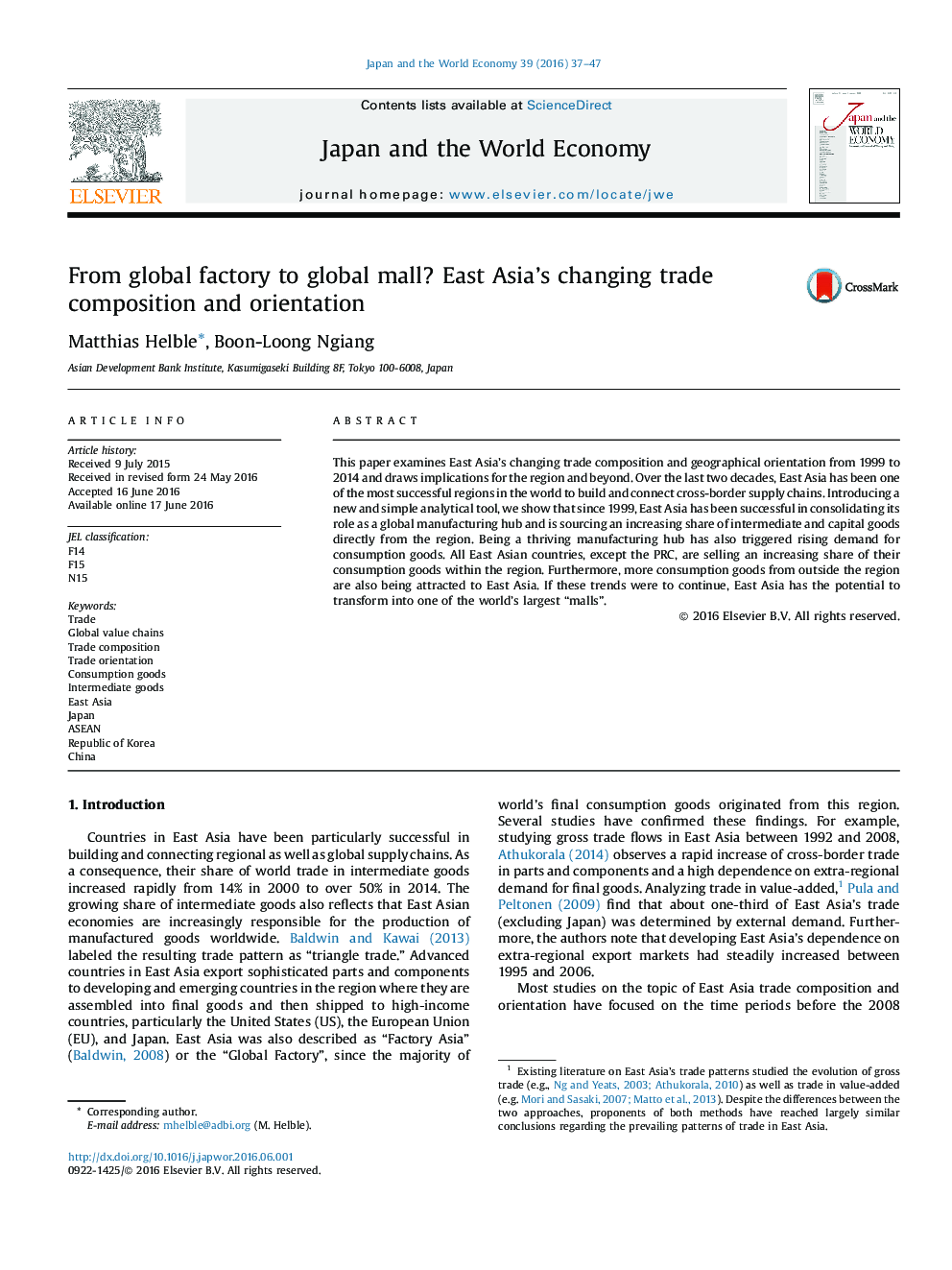| Article ID | Journal | Published Year | Pages | File Type |
|---|---|---|---|---|
| 5086106 | Japan and the World Economy | 2016 | 11 Pages |
Abstract
This paper examines East Asia's changing trade composition and geographical orientation from 1999 to 2014 and draws implications for the region and beyond. Over the last two decades, East Asia has been one of the most successful regions in the world to build and connect cross-border supply chains. Introducing a new and simple analytical tool, we show that since 1999, East Asia has been successful in consolidating its role as a global manufacturing hub and is sourcing an increasing share of intermediate and capital goods directly from the region. Being a thriving manufacturing hub has also triggered rising demand for consumption goods. All East Asian countries, except the PRC, are selling an increasing share of their consumption goods within the region. Furthermore, more consumption goods from outside the region are also being attracted to East Asia. If these trends were to continue, East Asia has the potential to transform into one of the world's largest “malls”.
Keywords
Related Topics
Social Sciences and Humanities
Economics, Econometrics and Finance
Economics and Econometrics
Authors
Matthias Helble, Boon-Loong Ngiang,
